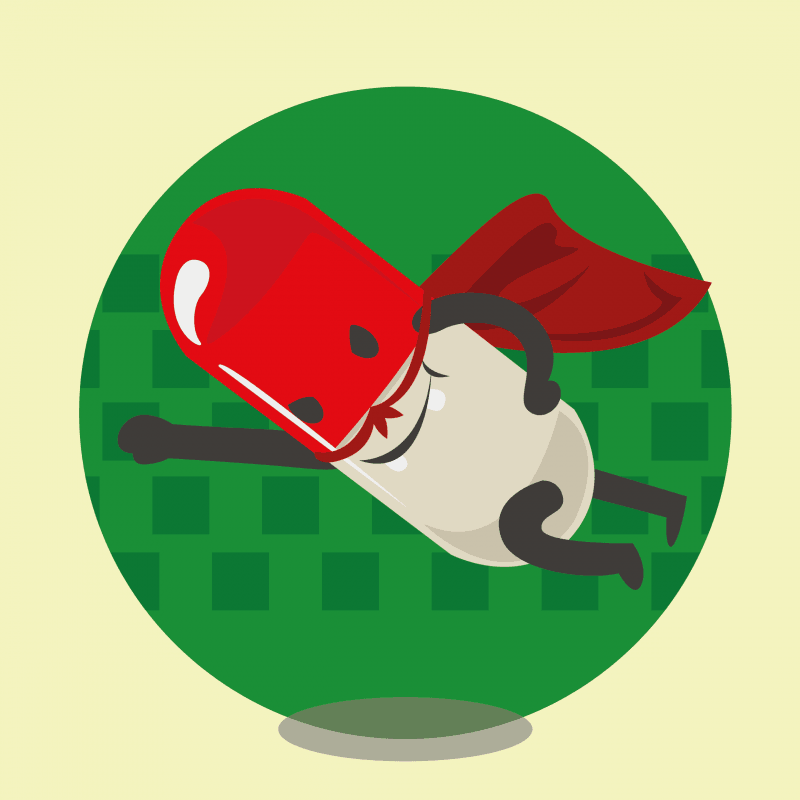

Are you wondering what the best Step 1 study schedule is? Does your hypothetical Step 1 study schedule have daily plans for what exactly you will do in the morning, afternoon, and evening? Do you crave knowing exactly what you should do for every hour of every day, but wonder if it’s realistic? Or do you wonder how you could possibly make a schedule, since you’ve never even taken Step 1 before?
If so, this is the article for you. In our work over the past 10+ years, we have seen lots of USMLE study schedule strategies come and go. Most of them rely on the (mistaken) beliefs that:
- We can predict how long studying for Step 1 will take with precision (spoiler: we can’t), and
- A one-size-fits-all approach exists (it doesn’t)
In this article, you will learn:
- The pros and cons of premade schedules, and why I don’t recommend them,
- Why virtually all detailed Step 1 study schedules are doomed to fail,
- How to budget time for uncertainty,
- What to do if you suspect you’ll need extra time, and
- Much, much more
Table of Contents
Why Do Most Detailed Step 1 Study Schedules Fail?
When I was a medical student at Stanford, we had a learning specialist who would sit down with any student to help them make a schedule. For her, it was a huge investment of time. She would block off a long period of time to go over what systems we would be covering on which days. We would then discuss how we would lay out each day. What sorts of resources would we use? How many QBank questions should we be doing each day? When should we build in break time?
By the end, we would have a color-coded masterpiece. Each day of our Step 1 study schedule would have a detailed plan of what we would do every day. Some of us even made an hourly schedule of which resources we would be using.
But with these beautiful schedules, we had one problem. No one actually followed them.

Detailed Step 1 schedules make us feel better…until they become unattainable and overwhelming
Everyone that I knew who went through this exercise ended up scrapping their calendar within the first week or two. And lest you think Stanford is an exception, note that I have never heard of someone successfully sticking with a detailed Step 1 study schedule. (Note: if you are the one exception – or know of one – please let us know in the comments!).
Why do these detailed Step 1 study schedules fail? There are three main reasons:
Problem: We Don’t Know What We Don’t Know
The concept of “unknown unknowns” describes the challenge of making a schedule for something we’ve never done before. In this concept – popularized by Donald Rumsfeld – we have four categories of knowledge:
- Known knowns – things we know we know (e.g., I know and can use the MAP = CO x TPR equation)
- Known unknowns – things we know we don’t know (e.g., I know that I have no idea what glycolysis is)
- Unknown knowns – things I know, but don’t realize I know (e.g., I didn’t realize that I could explain how a bacterial cell wall inhibitor could cause bacterial cell swelling)
- Unknown unknowns – things I don’t know that I don’t even know about (e.g., I didn’t even realize that I was supposed to know all of the major tumor suppressors/oncogenes)
It’s the idea of “unknown unknowns” that is most challenging when making a Step 1 schedule. Why? Because when studying for Step 1, while we may know SOME of what we need to study, a lot of it is in the dark.
We’ve discussed why the system of medical education does a poor job of preparing students for the USMLEs. The punchline? Each school has a group of hundreds of professors who lack the coordination, training, and incentives to teach. Consequently, the predictable outcome is that you will have a bunch of fact-heavy PowerPoints that train students to memorize/cram for exams that are unlike the USMLEs or real medicine.
This disjointed system favors the kinds of facts and details that the USMLEs favor less and less. The NBME, writers of the USMLEs, focuses on the application of concepts, rather than recall of facts. So when students are preparing for their Step 1, these “unknown unknowns” are often big surprises..
The large number of critical concepts med schools miss – and the different focus of Step 1 – begs the question:
If you don’t have a good idea of what you need to learn, how could you possibly make an effective Step 1 study schedule?
Problem: We Don’t Know How Long It Will Take
The large list of “unknown unknowns” makes creating a Step 1 study schedule in advance difficult. But figuring out that you need to learn something new is only the first step. You still have to master it – and determine how long that will take.
Let’s say you discover you need to learn the pathogenesis and presentation of the glycogen storage diseases. Your school had never covered this in-depth; you only vaguely knew of these conditions.
How much time should you budget for this? The short answer is it’s virtually impossible to plan enough time to master subjects you don’t even know you need to learn.
You’ll be tempted to cram in enough UWorld questions to “cover” all the associated Qbank questions. However, as we’ll discuss, “covering” something isn’t the same as mastering it to the point of getting questions right about it.
Problem: “Covering” ≠ Learning (I.e., mindlessly doing UFAP won’t raise your score)
As I alluded to before, “covering” something isn’t the same as learning it. Specifically, we’ve all heard the advice, “just do lots of UWorld questions and you’ll be fine.” The unspoken assumption is that the more UWorld questions you do, the higher your score will go.
It is true that there is a positive correlation between the number of QBank questions you can answer and your final score. However, it would be naïve to think that a correlation equals causation.
As we’ve discussed before, people who have mastered more – and have higher scores – will need less time to review their QBank blocks. It will look to all the world that the number of QBank questions done determined their final score. However, a more likely explanation is that they happened to know more to begin with. Knowing more allowed them to score higher AND do more questions.
The Solution Isn’t to Have NO Structure
So how do these factors impact your detailed Step 1 study schedule?
It’s not uncommon to realize we need much more than the few days in our schedule to cover all of cardiology. Why? “Unknown unknowns.”
When faced with this dilemma, the natural response is to try and cram what should take a week into a few days. It is (falsely) reassuring to be able to cross off “100 UWorld questions” or “20 pages of First Aid” from our checklist. But what should we do instead?
The key insight is this: anything you “cover” but don’t learn is wasted time. Specifically, while it feels good to move fast, speed does no good if you have to cover everything again. As the old adage goes, “slow is fast.”
Instead, whatever you learn, make sure you learn it well. Also be sure to choose the most important topics so you don’t get stuck mastering a minor footnote on your Step 1.
In short, focus more on the journey, less on the destination. Focus on fully understanding concepts – mastering, not cramming.
Concluding Thoughts
“I just wish I someone would tell me what I needed to learn and when,” is a common refrain in students we help. Implicit in that statement is the idea that we would love to know exactly what we need to do to achieve our goals.
Many of us in medicine were attracted to the stability and certainty the career promises. If we’re honest with ourselves, we likely crave that certainty in other aspects of our lives. And one of the places we crave that structure most is with our Step 1 study schedules.
Making a Step 1 study schedule is inherently messy. Not only do we often not know what we don’t know – we also are ill-prepared to estimate how long it will take to learn it. As such, we go into each day craving certainty but coming away feeling overwhelmed.
In a future post, I’ll discuss what we’ve found to be the most effective Step 1 study schedule. In the meantime, I’ll reiterate one point:
Studying that doesn’t lead to mastery is wasted time.
You will feel tempted to “cover” more to try and make up for last time. Resist that urge. Instead, take the time to learn things well the first time. It will feel slow, initially. However, know that this is yet another example where slow is fast.
What do you think? Have you found making detailed Step 1 study schedules works? Or have you found people spend lots of time making/re-making schedules they never follow? Let us know in the comments!
Photo by Gaining Visuals







